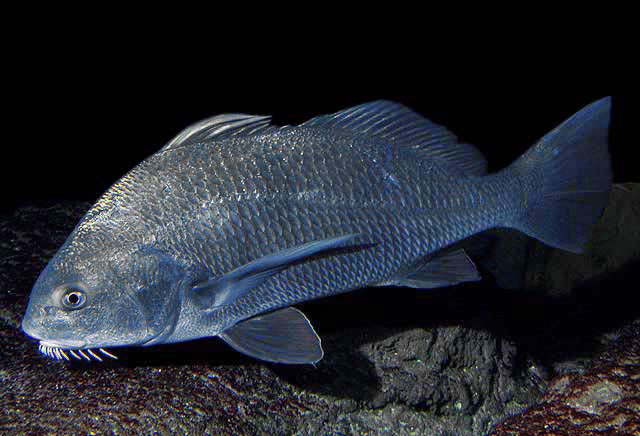Black Drum
| Life History Parameters | Value |
|---|---|
| Maximum weight (kg) | 51 |
| Maximum age (year) | 58 |
| Age at length 0 (year) | -0.129 |
| Age at Maturity (months) | 60 |
| Maximum Length (cm) | 150 |
| Length at Maturity (cm) | 65 |
| Linf. Asymptotic Length (cm) | 113.6 |
| K - von Bertalanffy growth coefficient | 0.17 |
| Natural Mortality | 0.06 |
| Jan | Feb | Mar | Apr | - | - | - | Aug | Sep | Oct | - | - |
Habitat and Distribution
This species is widely distributed in temperate and subtropical regions of the western Atlantic from Maine to Argentina, including the Gulf of Mexico. Adults and juveniles are found in sand and mud bottom habitats along the coast or within bays and estuaries.
Spawning season in the Gulf of Mexico
The spawning season for this species varies among regions and reports. The most common spawning season is from January to April with peak spawning during February and March. Spawning has been reported in some regions (e.g. Texas) and years from August to October with an October peak.
Spawning Patterns
Black drum form spawning aggregations of hundreds to thousands of fish in channels within bays, off the coast, and in or near channel passes. In some regions, individuals may migrate over 100 km to spawn, whereas other fish make short migrations to spawn or don't migrate at all. Therefore, the species is best described as a partial migratory spawning, with aggregations comprised of transients and residents. Spawning occurs in the evening, one to three hours after sunset, in depths of 3 to 50 m. Black Drum are broadcast spawners with external fertilization, and spawning likely occurs in groups.
Fishing Patterns in Relation to Spawning
Commercial landings are consistent throughout the year, and average montly landings are similar during spawning and non-spawning months.. Recreational landings increase noticebly during the period of September through December, which coincides with two spawning months, one of which is a peak spawning month. However, average monthly landings during spawning and non-spawning months are similar.
Management of Spawning Aggregations
Commercial and recreational fisheries for Black Drum are managed by state regulations. In states where the commercial fishery is regulated, regulations vary by state and include sized-based annual catch limits, or a daily catch limit. Recreational fisheries are managed by a daily catch limit, if regulations are present. There are no seasonal closures. Slot size is 14-30" in Texas, 16-27" in Louisiana, and 14-24" in Florida. Mississippi and Alabama do not have size regultaions. Louisiana does not have a maximum size limit for the commercial fishery.




